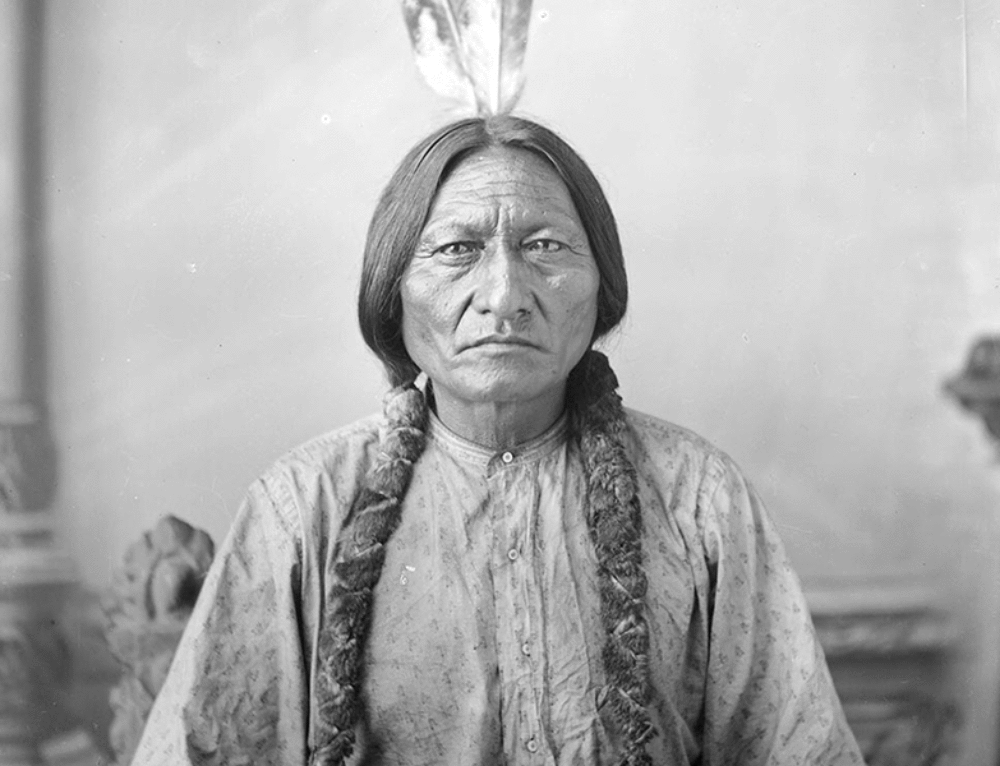Celebrating Native American Heritage
5 Of The Most Influential Native American Men US History

Chief Joseph (1840-1904)
Chief Joseph, born in 1840, was a prominent leader of the Nez Perce tribe, whose courageous resistance against the forced relocation of his people became legendary. Known for his eloquence and diplomacy, Chief Joseph sought peaceful coexistence with white settlers, advocating for his tribe’s rights and the preservation of their ancestral lands. In 1877, faced with the threat of removal to a reservation, he led his people on a 1,200-mile journey towards Canada, engaging in a series of strategic battles and evading pursuit by the US Army. Despite their valiant efforts, Chief Joseph and his band were ultimately captured, and their exile to a reservation marked a devastating loss for their freedom and way of life. Chief Joseph’s profound words, famously declaring “I will fight no more forever,” have come to symbolize the resilience and dignity of Native American resistance in the face of injustice. His legacy as a steadfast leader and advocate for his people continues to inspire and serve as a reminder of the ongoing struggles faced by indigenous communities.
Sitting Bull (1831-1890)
Sitting Bull (1831-1890)Sitting Bull, born in 1831, was a renowned Lakota Sioux leader whose unwavering resistance against the encroachment of white settlers became synonymous with Native American defiance. Known for his strategic brilliance and charismatic leadership, Sitting Bull led his people during tumultuous times, including the Battle of Little Bighorn in 1876, where his forces defeated General Custer’s troops. As a visionary and advocate for his tribe’s rights, Sitting Bull consistently fought for the preservation of Lakota lands and culture. His powerful speeches and ability to unite various Native American nations earned him widespread respect and admiration. Despite enduring hardships, including forced relocation and exile, Sitting Bull’s spirit remained unbroken. His tragic death in 1890 marked a profound loss, but his legacy as a symbol of indigenous resistance and the preservation of Native American heritage continues to inspire and resonate today.


Geronimo (1829-1909)
Geronimo, born in 1829, was a legendary leader of the Apache people and an emblem of Native American resistance against encroaching settlers and U.S. expansion. Revered for his warrior prowess and strategic brilliance, Geronimo fiercely defended his people’s lands and way of life. He led daring raids and fought against both Mexican and American forces in the Southwest. Geronimo’s relentless pursuit and ability to evade capture for many years became the stuff of legend. Eventually, after years of conflict, he surrendered to the U.S. government in 1886, marking the end of Apache resistance. Despite his captivity, Geronimo continued to advocate for Native American rights and preserve Apache culture. His life and struggles serve as a symbol of indigenous resilience and the ongoing fight for justice and recognition. Geronimo’s legacy endures as a testament to the enduring spirit and determination of Native American communities.
Chief Seattle (1786-1866)
Chief Seattle, born in 1786, was a respected leader of the Suquamish and Duwamish tribes in the Pacific Northwest. Known for his eloquence and wisdom, Chief Seattle’s words became a powerful symbol of Native American environmental stewardship and the preservation of indigenous culture. In 1854, he delivered a poignant speech in response to the U.S. government’s offer to purchase Native American lands. His words emphasized the interconnectedness of all life and the need for harmony between humans and nature. Chief Seattle’s message resonated beyond his time, becoming a timeless reminder of the importance of environmental conservation and the enduring value of indigenous knowledge. Though much of his life is shrouded in historical records, Chief Seattle’s legacy as a visionary leader and advocate for the preservation of Native American heritage continues to inspire and influence contemporary conversations about sustainability and the relationship between humanity and the natural world.


Crazy Horse (1840-1877)
Crazy Horse, born in 1840, was a revered Lakota Sioux warrior who played a pivotal role in the resistance against U.S. expansion into Native American territories. Known for his exceptional skill as a strategist, his bravery in battle, and his unwavering commitment to preserving the Lakota way of life, Crazy Horse became a legendary figure in Native American history. He fought in several significant battles, including the Battle of Little Bighorn in 1876, where he played a key role in defeating General Custer’s forces. Crazy Horse’s fierce determination and leadership earned him the respect and admiration of his people and other tribes. However, in 1877, he tragically surrendered to U.S. forces under deceptive circumstances and was later fatally stabbed in captivity. Crazy Horse’s legacy as a symbol of Native American resistance and cultural pride continues to inspire and captivate generations, reminding us of the ongoing struggle for indigenous rights and the resilience of Native American communities.